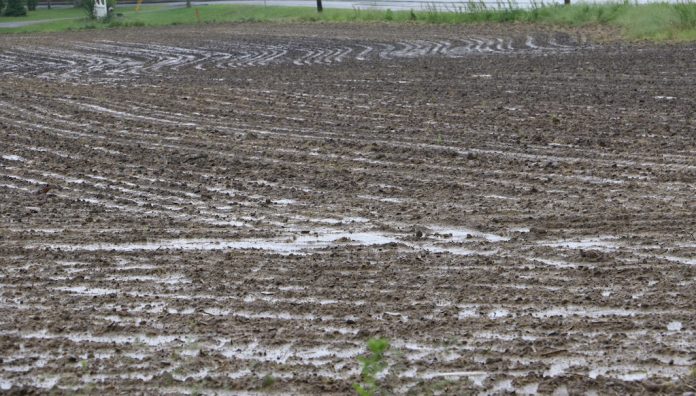The U.S. Department of Agriculture Crop Progress report of April 17 revealed that there is very little corn and almost no soybeans planted in the U.S. yet.
Little planted
Yes, there is corn in southern Illinois and Kentucky and Texas and places like that. The Midwest, however, where the abundance of corn and beans originate, is just barely started. The USDA reports that Ohio, as of April 16, had just traces of corn planted. The official number is “zero,” but I know that is not quite true.
The nation as a whole is 8% planted, ahead of the normal 5%. Ohio officially has no soybeans planted, and 1% has been the average. The U.S. is at 4%, but 1% is the average.
Oddly, one of the places where corn has been planted is in Ashtabula County in extreme Northeast Ohio. A period of dry soil conditions and temperatures in the 80s was tempting to some farmers. The cold, rainy spell that is this week will have some of them having second thoughts, but when the ground dries next time, planting will be in full swing.
Farther west, some beans are in the ground, responding to the results of early planting the last few years on soybean yields. For most, however, spring is not really here.
In Iowa and Southern Minnesota there is still snow in the ditches, and the rivers are more than full. In fact, the Upper Mississippi is closed to navigation this week because of high water. In the Dakotas and in Northern Minnesota, there is significant snow on the ground after record and near-record snowfall over a large area.
Right now, the snow on the ground and the full rivers have analysts thinking that this will be, at best, a normal spring, and planting could drag on if the ground does not warm up and dry out. Thus, the idea remains that the spring grain crops will remain in tight supply and susceptible to price bubbles.
Market reaction
For the week, May corn futures gained 23 cents, and December gained three. We added more than a dime to the May futures April 17 to close at $5.66 1/2. May soybeans were up eight cents for the week, but November was down eight.
We gained 16-1/2 cents on the May to a close of $15.17 on April 17. The November futures also gained, up a dime at $13.14 1/2. Betting now is that the corn may continue to make small gains until it looks like we will get the intended acres in this spring in good conditions.
Apparently, the spec funds have adopted this position. They started last week short corn, but by the end of the week, they were reported to now be net long a little.
The target goal watched by the advisories every year is to have 75% of the corn planted by May 15. That is going to be a challenge, with 3.4 million acres additional expected, and much of the increase coming in the northern states that still have snow cover.
Fertilizer prices
For months, there has been speculation that the nitrogen fertilizer prices that had gotten cheaper over the last year would strengthen in late winter.
The thinking was that the price got cheaper because the U.S. was exporting much more than normal since we had become the cheapest source in the world. Natural gas, used to make nitrogen fertilizer, had gotten several times more expensive in Europe.
The conclusion of analysts was that we would have to start importing or we would run short in the planting season. In fact, this price curve change came much later than expected. It is here, but it is modest so far.
Those producers in the Upper Midwest may be most at risk here for the price increase since the fertilizer needs to come up the Big Muddy, and the Big Muddy has been shut down somewhere above the Ohio River. The irony here is that we had navigation problems all last summer on the river system because of drought-related low water problems.
Political issues are affecting the movement of grain out of Ukraine. Exports that used to be just out of the Black Sea are being funneled by train through neighboring countries as traders fear the end of the agreement that allows safe passage out of the Black Sea. Poland, especially, has been affected by crashing local prices for grain because of the surfeit (I have wanted to use that word for a long time).
Production news out of South America still features the drought disaster that is the Argentine crop. They are now projected to have less than half of what they started out expecting, at maybe 23 MMT.
Again, it should be noted that the Brazilian corn and soybean crop, helped by Uruguay and Paraguay production, will more than make the difference. The big impact comes because Argentina exports a high percentage of its production, so importing nations, especially China, will have to turn to the U.S. for exportable supplies.
Wheat
Wheat prices have modestly rebounded. July Chicago futures are currently trading at about $7.15, which is a 22 1/4 cents so far this week (to the morning of April 18) and a gain of seven cents last week.
The wheat market is a dichotomy of class differences. The Hard Red Winter crop continues to be suspect, with the drought that has hurt the stands continuing. Meanwhile, Soft Red Winter wheat, produced in the east, is coming out of winter in the best shape in our memories.













